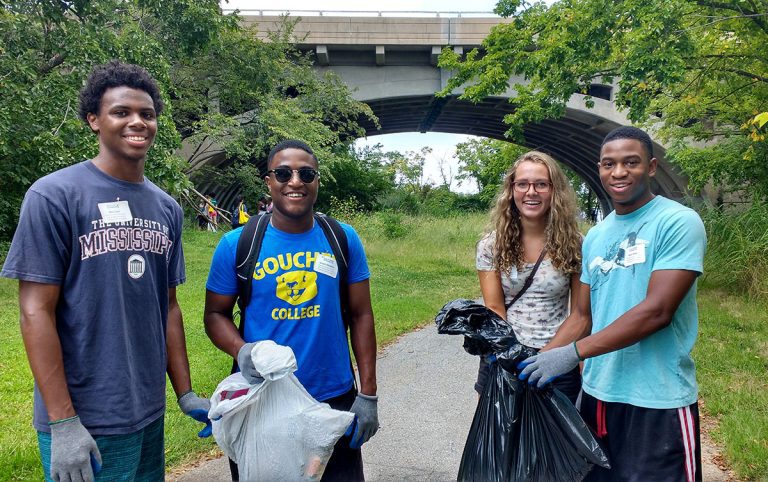Flowers in Concrete: How Rain Gardens Benefit Baltimore’s Waterways
Nature is constantly being shaped and molded by human activity to fit society’s needs.
Our landscapes have been largely modified by urbanization, without much consideration for the natural world surrounding us. For an industrial city like Baltimore, urbanization has degraded the health of our streams.
Most of this urbanization means more concrete and paved surfaces. These surfaces are impervious, meaning they won’t filter water the same way a garden does. Instead, they artificially alter the way that water moves around us– especially when it rains. Impervious surfaces channel water from our streets into storm drains that lead straight into our streams. In the process, the speed and volume of water is rapidly increased. Along the way, this fast-moving runoff collects everything in its path creating a rollercoaster of trash, heavy metals, and nutrients rushing right into our streams. When this runoff rollercoaster peaks it can lead to flash flooding events that harm people, waterways, and the aquatic life within them.

Urban cities are teeming with life, and Baltimore is no exception to this. On any given day you can spot a number of fish in our waterways, or watch pollinators buzzing by neighborhood gardens across the city. Even the grayest concrete jungles have great potential to promote natural systems. While water quality is inherently threatened by urban activity, rain gardens offer a way to mitigate these threats.
Rain gardens have shown to be an effective measure against urbanization and pollution, while also increasing the aesthetic value of an area. They are designed to collect, hold, and absorb stormwater. They act as a buffer, slowing down the rollercoaster of water heading for our streams.
Through partnerships with communities and other organizations BWB has been instrumental in assessing, designing, and implementing several rain gardens throughout the greater Baltimore region. Our restoration team is currently working on two rain gardens at Flannery Park in Baltimore County. NeighborSpace, a Baltimore non-profit committed to making communities more livable through park and natural area creation, reached out to BWB to construct the project. This park used to be an old asphalt lot that was collecting debris. BWB began work in January 2022 and recently completed the construction of the rain gardens and footpath through the mirco-park. The planting is to be completed in the spring with high hopes to beautify the Lochearn area.


By joining forces with community advocates we were able to raise funds, collaboratively design, and build a park that will have two rain gardens, a walking path, many native plants, and sculptures from the adjacent art studio. By May 2022 Flannery Park will be a usable green space that serves an ecological function. This park exemplifies the way communities can work together to protect the waterways we love.
This blog was made possible by information provided by Patrick McMahon, Restoration Project Manager at Blue Water Baltimore (BWB). Patrick has extensive restoration project management experience at Blue Water Baltimore, the Anacostia Watershed Society (AWS), Environmental Quality Resources, and the Maryland Environmental Service. He’s also completed a Masters of Science in Environmental Science at Towson University while researching stream restoration. Check out his research here!


